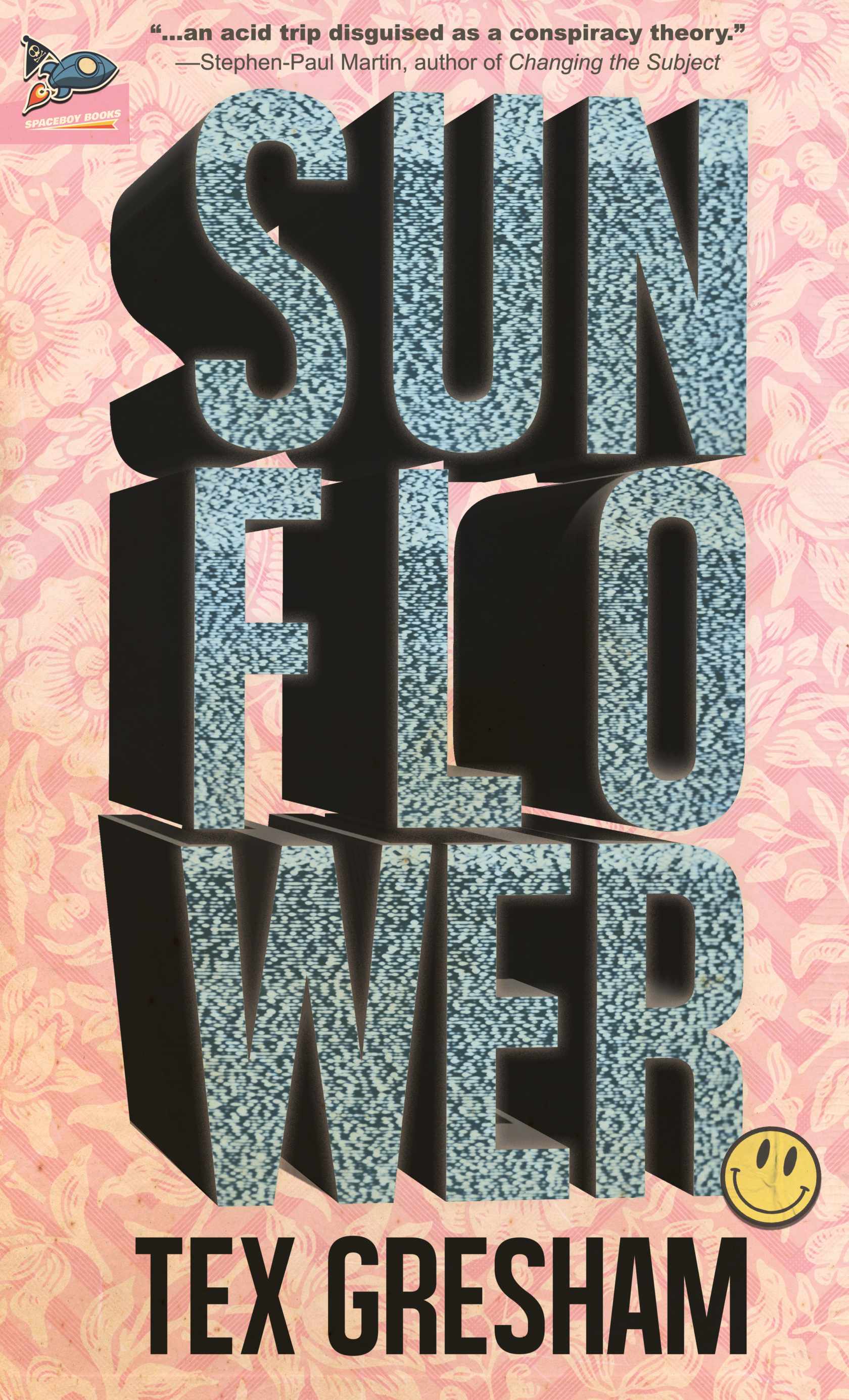Published November 9, 2021 by Spaceboy Books.
Sunflower by Tex Gresham is one of those encyclopedic novels. To reduce it down to its most basic plot: the novel is about an international conspiracy, a terrorist plot, and Hollywood. It mimics the storytelling devices of film and almost begs for adaptation while also seeming impossible to adapt. Divided into three acts, the text has over a dozen deleted scenes in the back of the book, an alternate ending, includes excerpts of a screenplay, and even a message from the Zodiac killer to decode. This is a two-bookmark book. It actually feels more like a Criterion Collection release than a story ready for the screen.
Sunflower is kind of like vomiting the movies Inherent Vice and Brazil on top of Infinite Jest and House of Leaves. It runs the entire emotional gamut, it’s overflowing with rich characterization, it unravels and winds back up—it’s fucking long, a truly maximalist affair. In the novel, our reality blends into an alternate future where the United States is an empire with California as a commonwealth. References to A-list actors and films alongside fictional ones make this alternate future feel real and lived in.
Gresham has a penchant for the macabre. Few characters in Sunflower make it through the story unmaimed. There are tongues cut out, genital torture, hand bones squeezed to a pulp, stabbings, shootings, and people melting into slime. The conspiracies and horror were expected, but the top-tier comedy was not. When Gresham crafts a morose scene, it’s contrasted with black humor of the highest caliber. The comedic timing is uncanny, like a spoonful of sugar to help the misery go down. He has a knack for crafting high-tension scenes and then releasing that tension in a satisfying yet unpredictable way.
For example, there’s a scene where a man is on a blind date with a beautiful aspiring actress. They’re at an expensive restaurant. He’s a little anxious and trying to find the right moment to get up and pee. It gets to the point that he feels like his guts are in open revolt against him. When his date reveals that she’s only fifteen he loses all interest, stands up, and makes his way to the restroom. His contorted guts blast loud farts all the way through the dining room to the disgust of many. After urinating, he makes a dark discovery in one of the bathroom stalls that foreshadows what’s to come in the rest of the novel. Sunflower is chock full of gross and hilarious scenes like this, which are crucial to the plot’s development.
The book starts off a little messy. It’s not clear who the main characters are until the second act. But the story is engrossing if the reader can adjust to its nonlinear style. The meta-plot lands its climax and wraps up with a satisfying conclusion—though it does sort of sprint to the end in the third act. Sunflower is dense and there is only so much a reader can gleam in one pass, which is to say, it has incredibly high replay value. The novel stands out because of how it doesn’t fit into the publishing landscape. It’s too lowbrow for literary fiction and not sci-fi or horror enough for typical genre readers. So, take a break from your regular diet of genre and/or literary fiction and read some kind of bizzarro novel from a totally obsessed author.
Tex Gresham wears his influences on Sunflower’s sleeve. That’s not a diss or a detraction either; Gresham isn’t parroting his heroes. Rather, he is the dream realized of every kid with an encyclopedic knowledge of their interests. He’s one of those people who has seen every interview with their favorite filmmakers and musicians. The kind of person who probably bores their friends with the details they never cared to know about a film. But what sets Tex Gresham apart from the rest of that ilk is that he’s the one in ten thousand who actually takes that knowledge, those influences, and creates something truly inspired with it. He’s synthesizing his influences into some other style that is all his own and putting his work out into the world.
Originally published at FrictionLit
